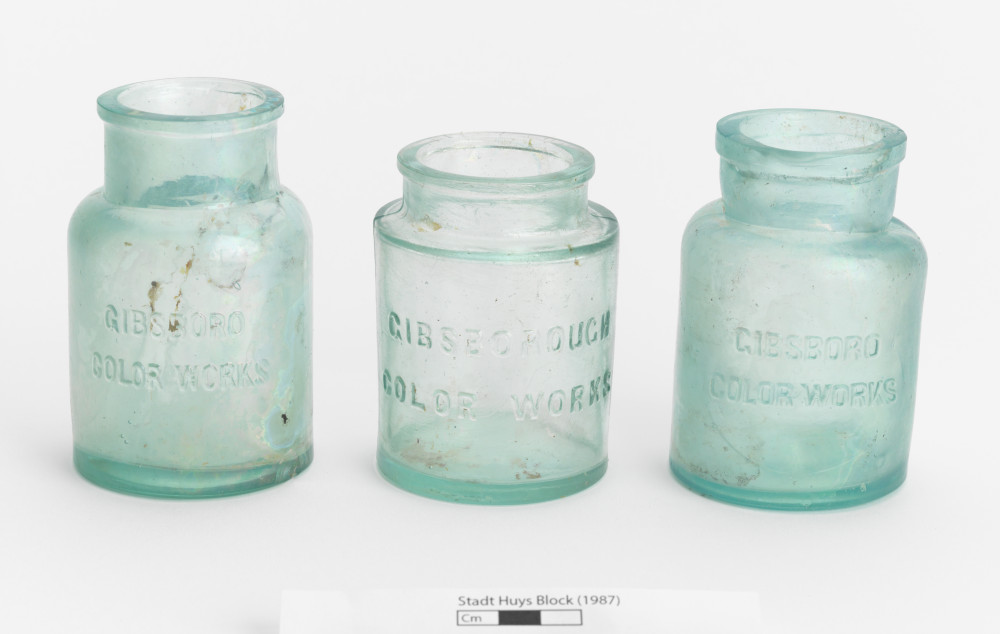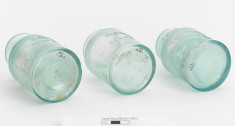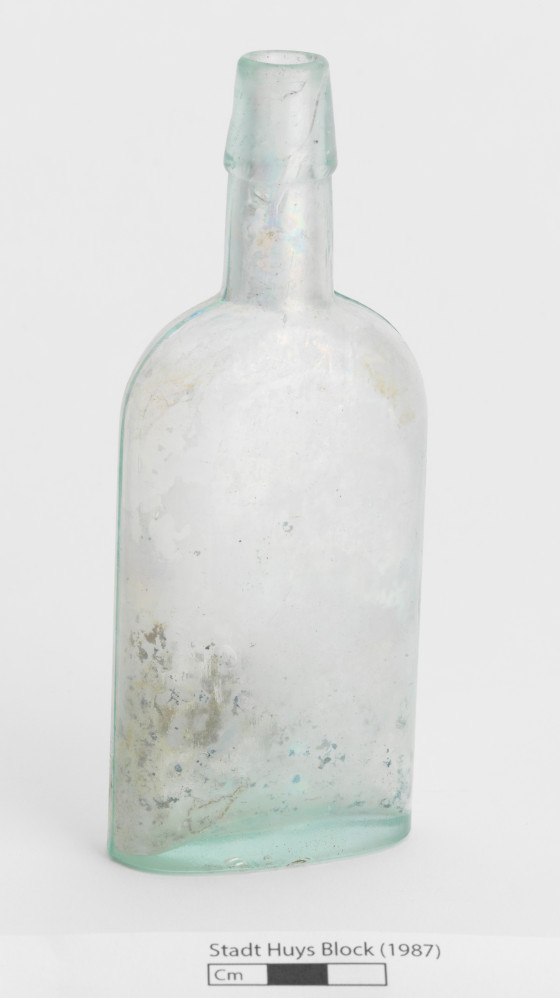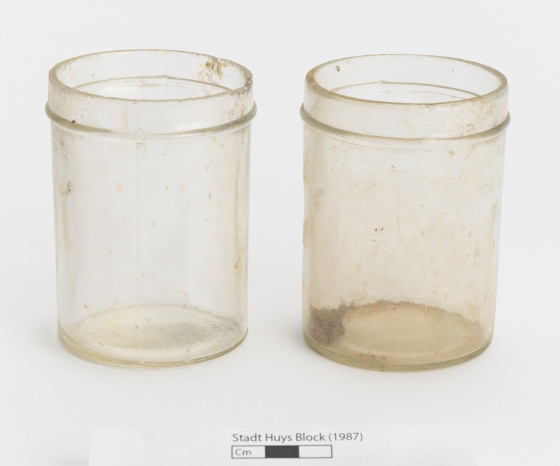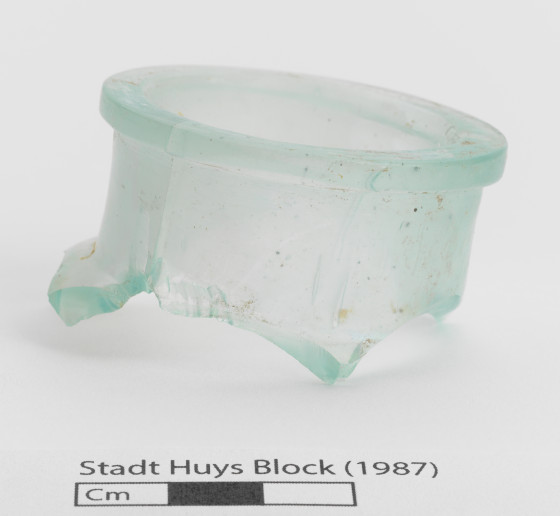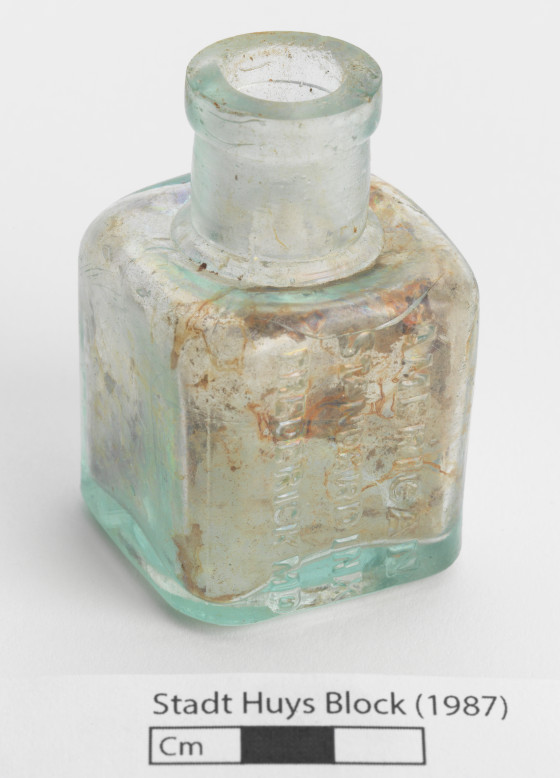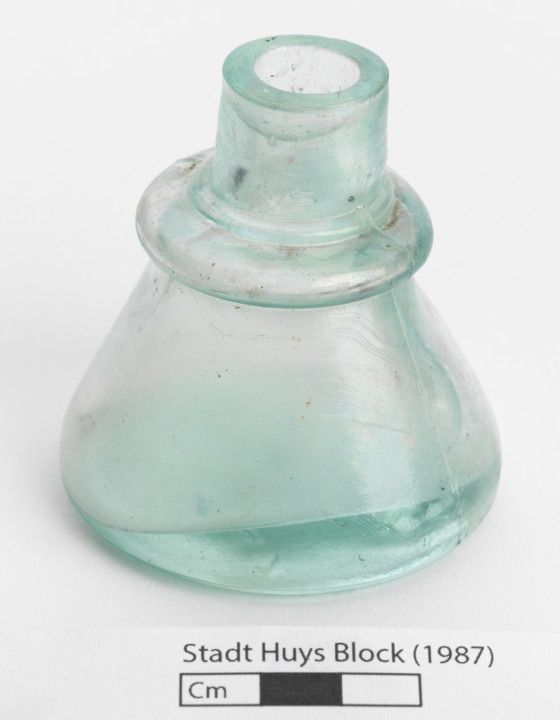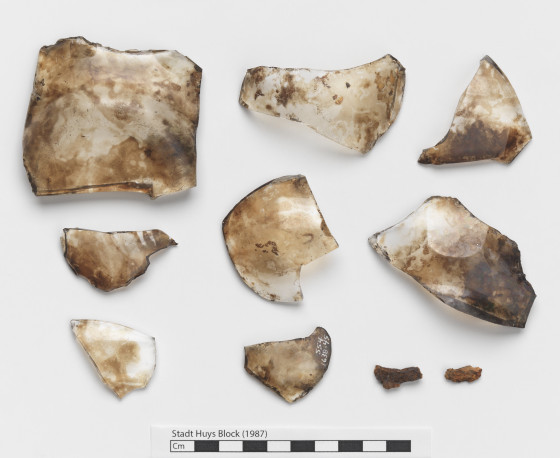These three non-leaded aqua glass bottles were produced by the Gibbsboro White Zinc & Color Works Company, which was founded in 1849 and incorporated in 1852 in Gibbsboro, New Jersey by Joseph Foster and John Lucas. The three bottles are squat with wide mouths, which indicates that they probably contained powdered pigments to be mixed. Despite the name of the town where the factory and company was based, the three bottles have slight different stylizations and spellings of the company's name, which suggests that the bottles were produced at different times during the company's lifespan. According to the site's inventory sheet, all three bottles were made between 1857 and 1920. Advertisements show that the Gibbsboro White Zinc & Color Works Company underwent several name changes during its 129-year existence, which might support the variation in spelling and stylization of the company’s name on the three bottles. Each bottle has slight variations in the fabrication of their necks and lips, but share similar characteristics, such as the seams, embossed lettering, and absence of pontils. Each bottle appears to be mold-blown using a two-part mold, and their seams, embossing, and finishing can typically be dated to between 1850 and 1920. Bottle 554.1638.01 is 3 9/16" tall with a base diameter of 2 9/16". It has visible side seams up to its rim, no pontil, is embossed with “GIBSBOROUGH/COLOR WORKS, a more uniform shape than the other two bottles, and a hand-finished lip, though the base is uneven and varies in thickness. These characteristics suggest that the container was mold-blown using a two-part mold. The more uniform shape and length of the seam suggests that this is the youngest of the three bottles because there is less evidence of hand-finishing on the shoulder, neck, and lip. Bottles with seams like this can typically be dated to between 1870 and 1900. Bottle 554.1638.02 is 4" tall with a base diameter of 2 5/8". has the most patination of the three. It has visible side seams that begin at the bottom to the shoulder, is a little lopsided, drooping down on right side, has a hand-finished lip, and is embossed with “GIBSBORO/COLORWORKS” surrounded by a circle. The body looks mold-blown with a hand-applied neck and lip. Bottles with seams like this can typically be dated to 1840-1860. Bottle 554.1638.03 is 4 3/16" tall with a base diameter of 2 5/8". has visible side seams that begin at the bottom and extend up the shoulder but end under the lip, and “GIBSBORO/COLOR WORKS” embossed on the front. Bottles with seams like this can typically be dated to 1860-1880. Celebrated for the high quality of their lead-based white, zinc, and green pigments, the Gibbsboro White Zinc & Color Works Company enjoyed over a century of success, appearing at several World's Expositions, and revitalizing the economy of Camden County, New Jersey. The company remained in the Lucas family until the plant was shuttered in 1978 due to the toxicity of its manufacturing procedures and dwindling business. The factory had not updated safety precautions surrounding the handling of lead pigments, which were produced on-site, and by the 21st century, safer, non-carcinogenic paint substitutes were developed by competing companies.
-
Object number
554.1638.01, 554.1638.02, 554.1638.03
-
Date made
Late 19th century, early 20th century
-
Decoration
-
Color
Aqua
-
Category
-
Class
Glass
-
Functions
-
Material
-
Context
-
Forms
Complete
-
Ware types
Machine Made
-
Techniques
Mold Blown

